|
A6M3 Zero Type 32

Eduard ProfiPACK, 1/48 scale
S
u m m a r y |
| Catalogue Number: |
Eduard Kit No. 82213 - A6M3 Zero Type 32 ProfiPACK. |
| Scale: |
1/48 |
| Contents and Media: |
141 parts in grey coloured plastic (including 27 marked not for use); 23 parts in clear (14 not used); one colour photo-etched fret; self-adhesive die-cut masking sheet; markings for five aircraft |
| Price: |
USD$54.95 plus shipping,
available online now from Eduard
GBP£29.20 (£24.33 Export Price) plus shipping available from Hannants |
| Review Type: |
FirstLook |
| Advantages: |
Accurate; high level of detail; outstanding surface features including crisply recessed panels and subtle raised textures where appropriate; assembly jig for engine cowling; includes colour photo-etched parts; separate control surfaces; includes die-cut canopy masks. |
| Disadvantages: |
None noted. |
| Conclusion: |
Eduard's 1:48 scale A6M3 Zero Type 32 maintains the high standards of this prolific Czech company.
The cockpit is comprehensive, surface textures are second to none, and the inclusion of the cowling assembly jig is further evidence of Eduard's continuous innovation.
I have built the Limited Edition Dual Combo version of the A6M2 and I can confirm that it builds as good as it looks in the box.
Oh Eduard, you've done it again! |
Reviewed by Brett Green

In 1941, Nakajima introduced the Sakae 21 engine, which used a two-speed supercharger for better altitude performance, and increased power to 840 kW (1,130 hp). A prototype Zero with the new engine was first flown on 15 July 1941.
The new Sakae was slightly heavier and somewhat longer due to the larger supercharger, which moved the centre of gravity too far forward on the existing airframe. To correct for this, the engine mountings were cut back by 185 mm (7.3 in) to move the engine toward the cockpit. This had the side effect of reducing the size of the main fuselage fuel tank (located between the engine and the cockpit) from 518 L (137 US gal) to 470 L (120 US gal). The cowling was redesigned to enlarge the cowl flaps, revise the oil cooler air intake, and move the carburettor air intake to the upper half of the cowling.

The wings were redesigned to reduce span, eliminate the folding tips, and square off the wingtips. The inboard edge of the aileron was moved outboard by one rib, and the wing fuel tanks were enlarged accordingly to 420 L (110 US gal). The two 20 mm wing cannon were upgraded from the Type 99 Mark l to the Mark II, which required a bulge in the sheet metal of the wing below each cannon. The wings also included larger ammunition boxes and thus allowing 100 rounds per cannon.
The Sakae 21 engine and other changes increased maximum speed by only 11 km/h (6.8 mph) compared to the Model 21, but sacrificed nearly 1,000 km (620 mi) of range. Nevertheless, the navy accepted the type and it entered production in April 1942.
The shorter wingspan led to better roll, and the reduced drag allowed the diving speed to be increased to 670 km/h (420 mph).
On the downside, turning and range, which were the strengths of the Model 21, suffered due to smaller ailerons, decreased lift and greater fuel consumption. The shorter range proved a significant limitation during the Solomons Campaign, during which Zeros based at Rabaul had to travel nearly to their maximum range to reach Guadalcanal and return. Consequently, the Model 32 was unsuited to that campaign and was used mainly for shorter range offensive missions and interception.
This variant was flown by only a small number of units, and only 343 were built.*
* Historical text adapted from Wikipedia
Eduard released the first of their 1:48 scale A6M Zero family in late 2021 with a Limited Edition, Dual Combo A6M2 Zero Type 21. This kit was labelled "Tora Tora Tora", and carried Pearl Harbour markings exclusively for the two kits contained in the carton.
Their more standard ProfiPACK 1:48 scale A6M2 Zero Type 21 kit followed with one in the box this time and markings for five options.
Now Eduard has expanded the family to include the A6M3 Type 32.
Eduard's 1:48 scale A6M3 Type 32 Zero ProfiPACK comprises 141 parts in grey coloured plastic (including 27 marked not for use), 23 parts in clear (10 not used), one colour photo-etched fret, self-adhesive die-cut masking sheet and markings for five aircraft. 27 of the grey parts and ten of the clear are marked not for use, so the actual parts count is quite modest.
Eduard has cut no corners here. This is a substantially different kit with three new sprues covering all the unique characteristics of this version -Sprue H (fuselage), Sprue M (wings) and Sprue V (some specific detail parts).
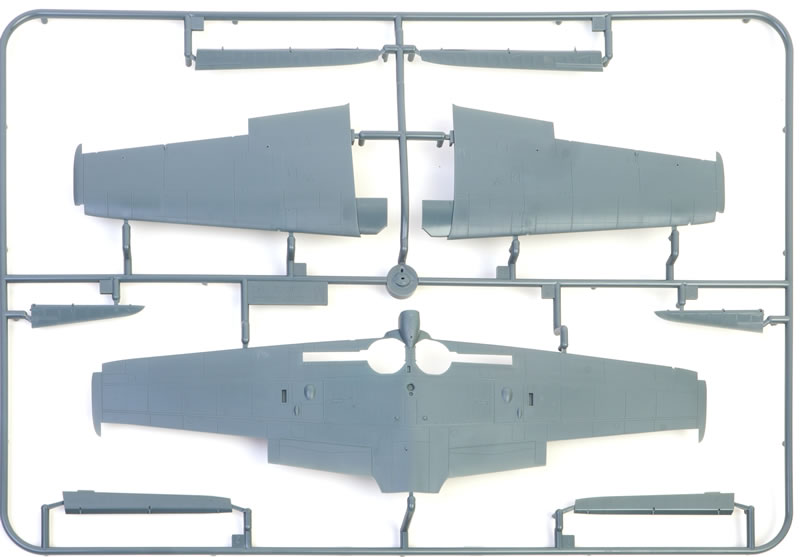
Surface texture is everything we have come to expect from Eduard - just gorgeous. There are very fine and crisply recessed panel lines, rivets and fasteners.
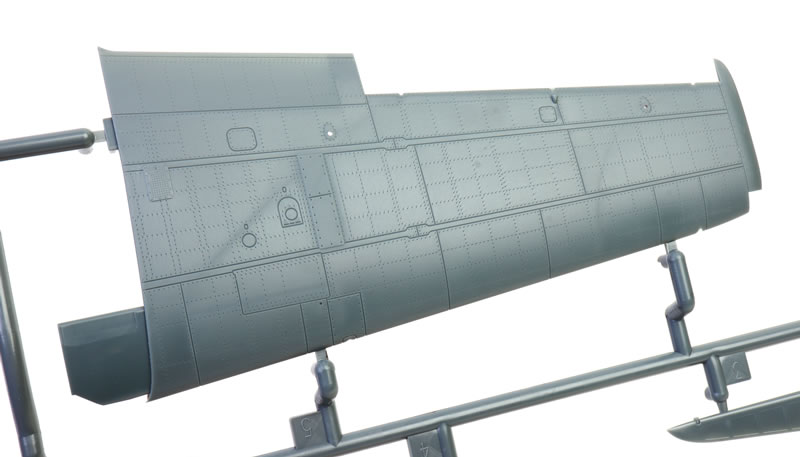
There are also rows of subtly raised rivets and weld beads on the drop tank, plus raised fabric rib stitching and wing panels. These really add to the effect and the closer you look, the better it gets! I can't see any moulding imperfections in my kit.
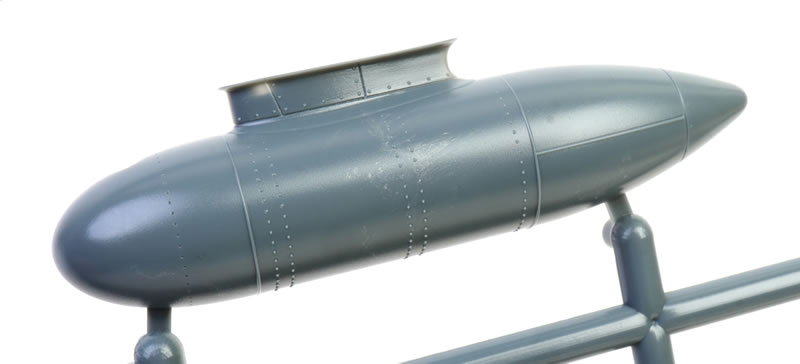
Assembly starts in the cockpit. Some structural detail is moulded onto the inside of the fuselage sides, and the front office is enhanced with Eduard’s excellent colour photo-etched parts. Separate parts are supplied for the fuse box, throttle quadrant, radios, side console, bulkheads and more. These are built up in layers on the inside of the fuselage halves.
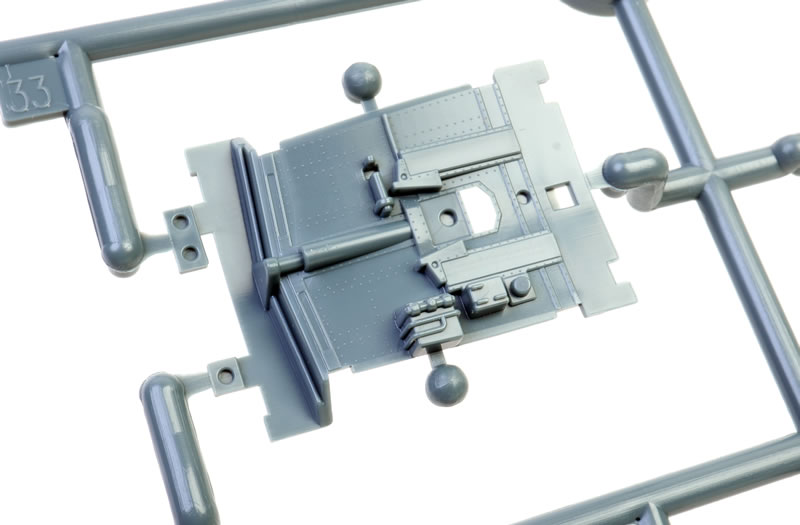
The instrument panel may be finished with either the supplied colour photo-etched parts or decals. If you prefer, you could paint the plastic parts yourself too – the choice is yours.
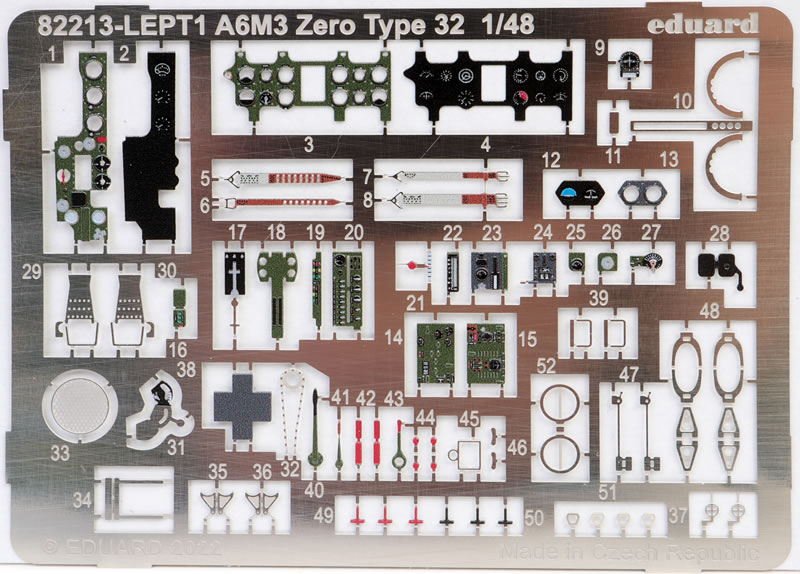
The one-piece seat is moulded with full perforations and it looks quite acceptably thin. If you want thinner still, Eduard is offering a 3D printed seat as an aftermarket option.
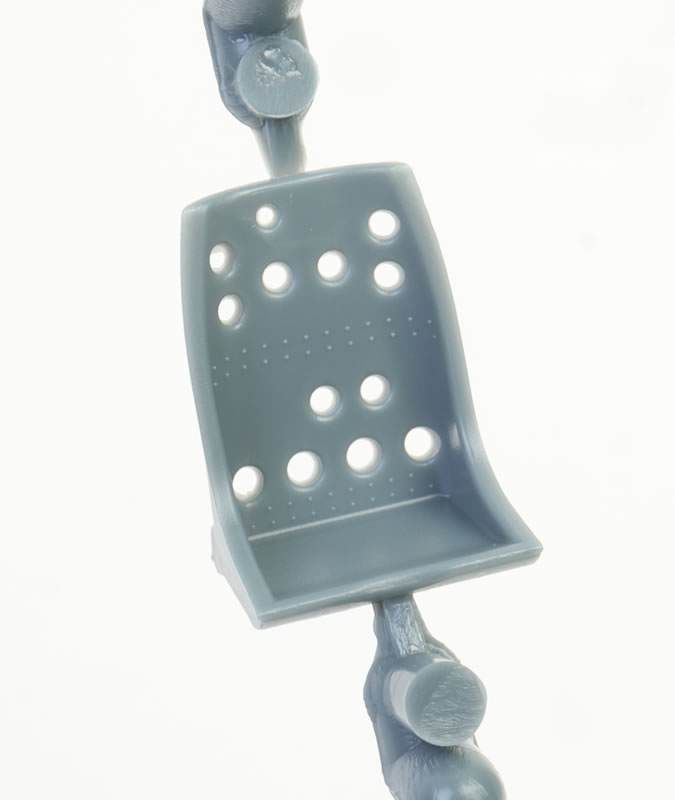
Colour photo-etched harness straps are also included.
The cowl machine guns are also built into the front of the cockpit. The overall effect should look very busywhen this is all in place.
The engine is made up from just seven parts including the rear mount but detail is very crisp and fine. It should look very nice after careful painting and weathering.
The wings are conventionally presented as a full-span lower section and separate upper halves. The wheel wells are built up from five separate parts that are glued to the inside of the lower wing halves. One of these parts acts as a nice rigid wing spar. Additional detail parts are also included for the wheel wells.
Ailerons, elevators and rudder are all separate parts. Flaps are moulded shut.
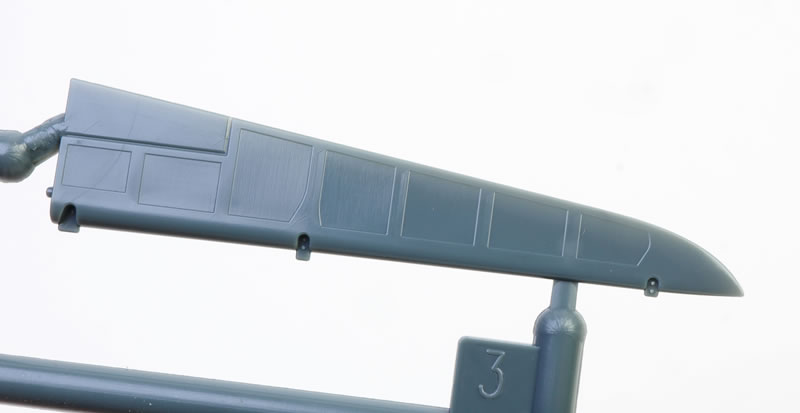
Wing tip navigation lights are supplied as clear parts.
The canopy parts are clear, thin and free from distortion. The canopy may be posed open or closed – one of the very few options in this kit. Alternative parts are offered for open or closed sliding section.
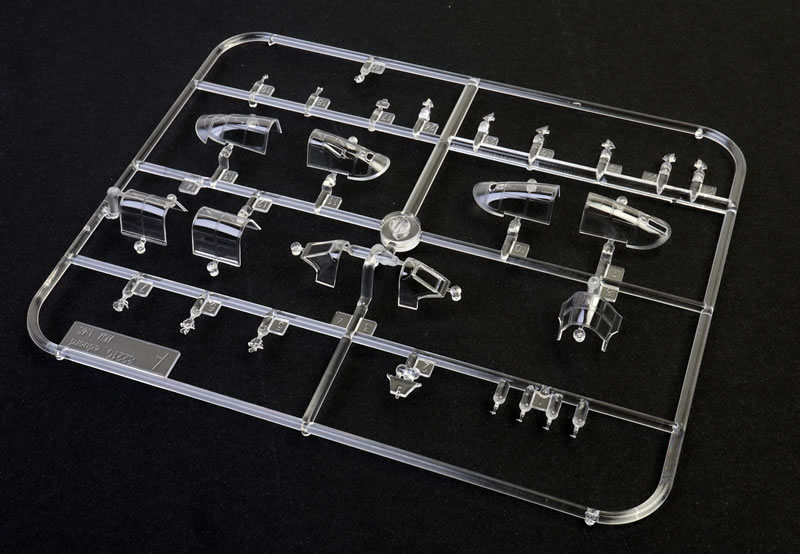
Self-adhesive die-cut masks are provided for the canopy and the main wheel hubs.
Markings
Markings are offered for five aircraft.
-
A6M3 Zero Type 32 1/48 - Ldg. Sea. Kenji Yanagiya, Kokutai 204, Rabaul base, New Britain, April 1943
-
A6M3 Zero Type 32 1/48 - c/n 3018, Tainan Kokutai, Buna airfield, New Guinea, August 1942
-
A6M3 Zero Type 32 1/48 - PO1c Kyoshi Ito, 3. Kokutai, Koepang airfield, Timor Island, September 1942
-
A6M3 Zero Type 32 1/48 - Zuikaku Fighter Squadron, aircraft carrier Zuikaku, October 1942
-
A6M3 Zero Type 32 1/48 - CPO Takeo Tanimizu, Tainan Kokutai (II), Tainan airbase, Taiwan, September 1944

The instructions offer four view colour illustrations for all five options, plus individual histories for each subject.

The decal sheet is printed by Eduard. Stencils are also included on a separate smaller sheet.
Printing and registration look good on my sample.
Eduard's 1:48 scale A6M3 Zero Type 32 maintains the high standards of this prolific Czech company. The cockpit is comprehensive, surface textures are second to none, and the inclusion of the cowling assembly jig is further evidence of Eduard's continuous innovation.
I have built the Limited Edition Dual Combo version of the A6M2 and I can confirm that it builds as good as it looks in the box.
Oh Eduard, you've done it again!
Thanks to Eduard for the sample.
Review Text Copyright © 2022 by
Brett Green
Page Created 20 December, 2022
Last updated
21 December, 2022
Back to HyperScale Main Page
Back to Reviews Page |
